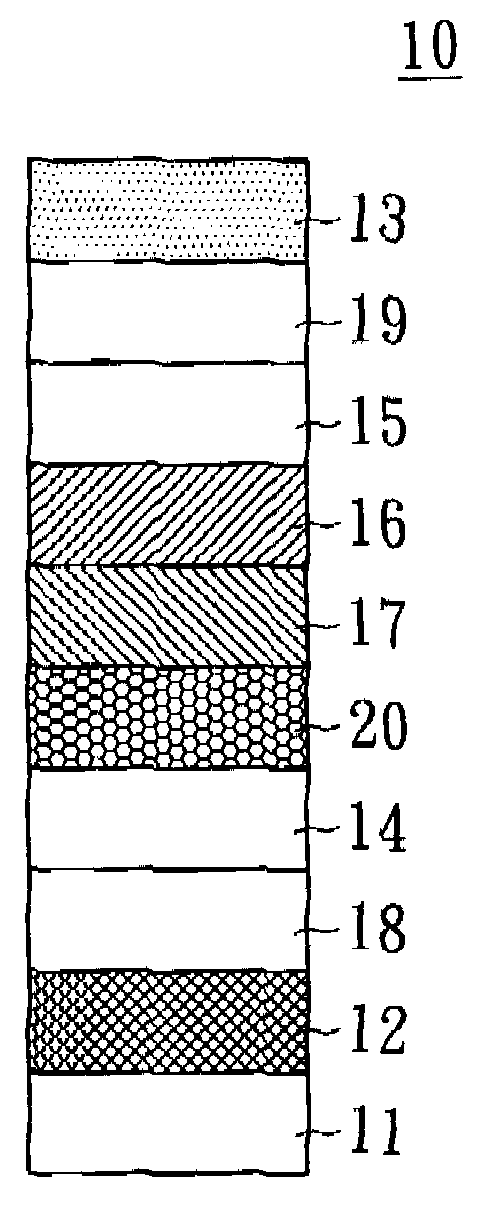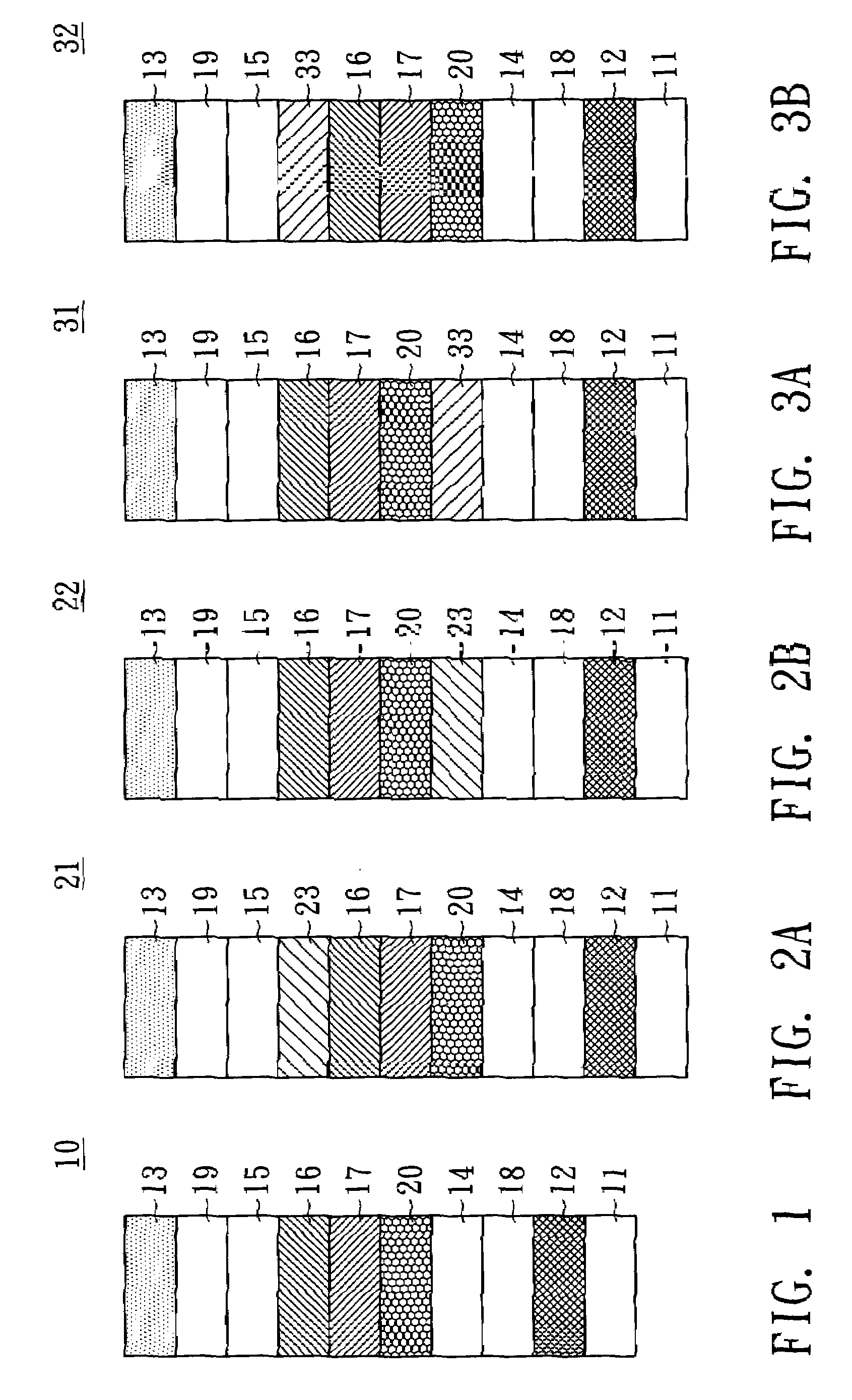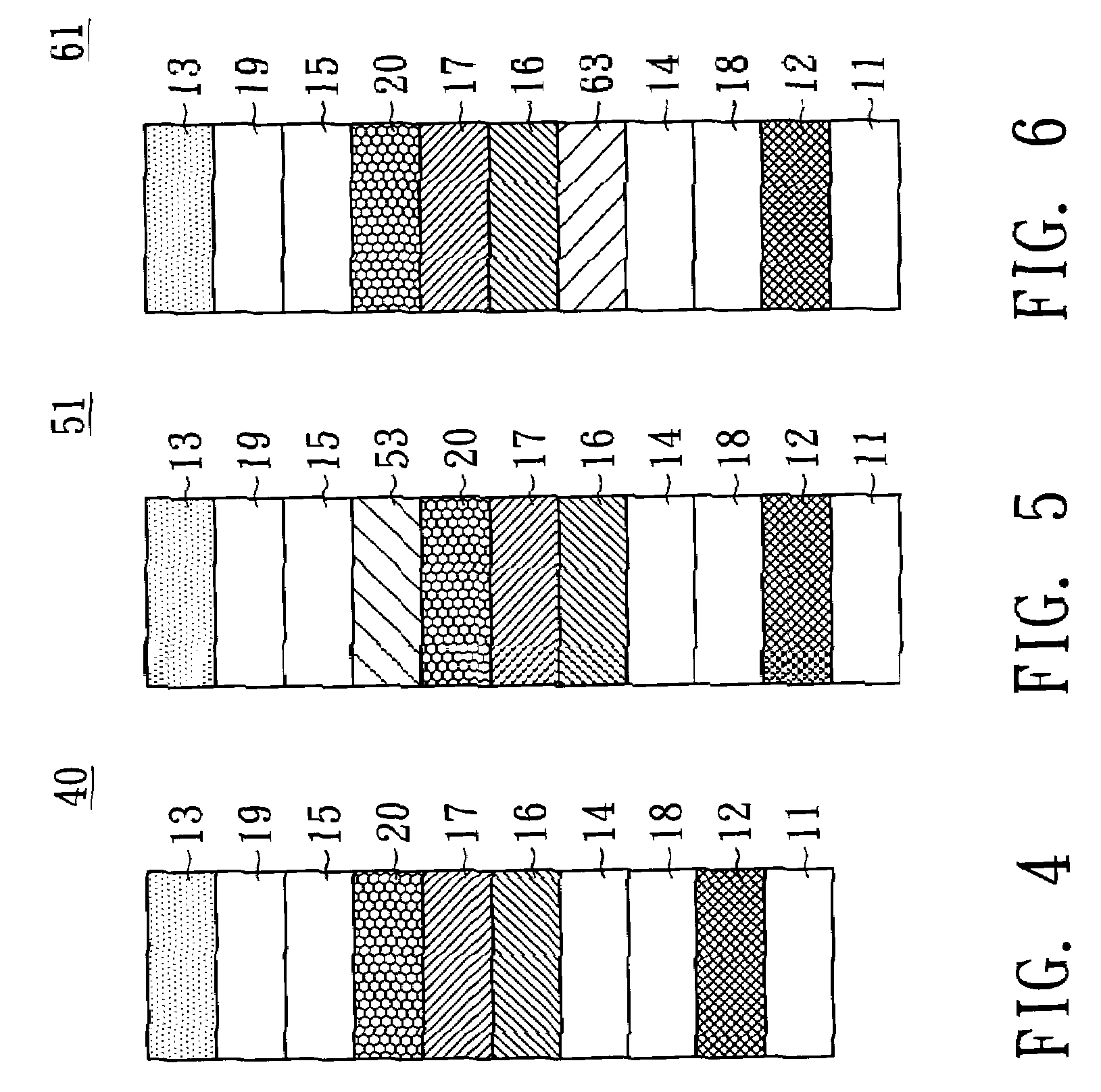Organic electroluminescent device
a technology of electroluminescent devices and organs, which is applied in the direction of discharge tubes/lamp details, discharge tubes luminescnet screens, other domestic articles, etc., can solve the problems of long exciton lifetime, triplet-triplet annihilation, and energy of two triplet excitons lost in heat or vibration instead of releasing photons, so as to improve luminance efficiency and improve luminance efficiency of phosphorescent emissive layers.
- Summary
- Abstract
- Description
- Claims
- Application Information
AI Technical Summary
Benefits of technology
Problems solved by technology
Method used
Image
Examples
first embodiment
[0027]Referring to FIG. 1, a sectional view of an organic electroluminescent device (OELD) according to the first embodiment of the present invention is provided. The organic electroluminescent device includes an organic light emitting diode (OLED) and a polymer light emitting diode (PLED). The OLED is illustrated in the present embodiment of the invention. However, the skill revealed in the present embodiment of the invention can be applied to PLED as well.
[0028]In FIG. 1, the organic electroluminescent device 10 includes a substrate 11, a first electrode 12, a second electrode 13, a hole transport layer 14, an electron transport layer 15 and at least two emissive layers. The first electrode 12 (such as anode) and the second electrode 13 (such as cathode) opposite to the first electrode 12 are disposed over the substrate 11. The hole transport layer 14 is disposed between the first electrode 12 and the second electrode 13. The electron transport layer 15 is disposed between the sec...
second embodiment
[0042]Referring to FIG. 2A-2B, cross-sectional views of organic electroluminescent devices according to the second embodiment of the present invention are illustrated. Compared with the organic electroluminescent device 10 of the first embodiment of the present invention, the organic electroluminescent devices 21 and 22 of the present embodiment of the invention further include the second fluorescent emissive layer 23. The same other elements using the same reference numbers are not illustrated redundantly.
[0043]In FIG. 2A, the second fluorescent emissive layer 23 is disposed between the first fluorescent emissive layer 16 and the electron transport layer 15.
[0044]In FIG. 2B, the second fluorescent emissive layer 23 is disposed between the first phosphorescent emissive layer 17 and the hole transport layer 14. In other words, the second fluorescent emissive layer 23 is disposed between the exciton blocking layer 20 and the hole transport layer 14.
[0045]However, a person having ordin...
third embodiment
[0047]Referring to FIG. 3A-3B, two cross-sectional views of organic electroluminescent devices according to the third embodiment of the present invention are illustrated. Compared with the organic electroluminescent device 10 of the first embodiment of the present invention, the organic electroluminescent devices 31 and 32 of the present embodiment of the invention further include the second phosphorescent emissive layer 33. The same other elements having the same reference numbers are not illustrated redundantly.
[0048]In FIG. 3A, the second phosphorescent emissive layer 33 is disposed between the first phosphorescent emissive layer 17 and the hole transport layer 14. In other words, the second phosphorescent emissive layer 33 is disposed between the exciton blocking layer 30 and the hole transport layer 14.
[0049]In FIG. 3B, the second phosphorescent emissive layer 33 is disposed between the first fluorescent emissive layer 16 and the electron transport layer 15. The organic electro...
PUM
 Login to View More
Login to View More Abstract
Description
Claims
Application Information
 Login to View More
Login to View More - R&D
- Intellectual Property
- Life Sciences
- Materials
- Tech Scout
- Unparalleled Data Quality
- Higher Quality Content
- 60% Fewer Hallucinations
Browse by: Latest US Patents, China's latest patents, Technical Efficacy Thesaurus, Application Domain, Technology Topic, Popular Technical Reports.
© 2025 PatSnap. All rights reserved.Legal|Privacy policy|Modern Slavery Act Transparency Statement|Sitemap|About US| Contact US: help@patsnap.com



